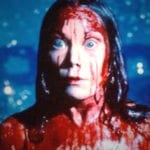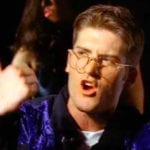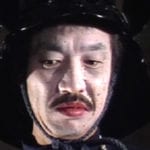 Weird Stuff
Weird Stuff  Weird Stuff
Weird Stuff  Animals
Animals 10 Inspiring Tales of Horses Being Human
 Mysteries
Mysteries Top 10 Haunting Facts About the Ghost Ship MV Alta
 History
History 10 Surprising Stories About the Texas Rangers
 Humans
Humans 10 Philosophers Who Were Driven Mad by Their Own Theories
 Miscellaneous
Miscellaneous 10 Video-Game-Worthy Weapons and Armors from History
 Weird Stuff
Weird Stuff 10 Psychics Who Accurately Predicted Wartime Events
 The Arts
The Arts 10 Pieces of Art Inspired by a Broken Heart
 Health
Health 10 Science Fiction-Sounding New Medical Treatments
 History
History 10 Surprising Facts About the Father of Submarine Warfare
 Weird Stuff
Weird Stuff 10 Times Real Laws Were Based on Bizarre Hypotheticals
 Animals
Animals 10 Inspiring Tales of Horses Being Human
 Mysteries
Mysteries Top 10 Haunting Facts About the Ghost Ship MV Alta
Who's Behind Listverse?

Jamie Frater
Head Editor
Jamie founded Listverse due to an insatiable desire to share fascinating, obscure, and bizarre facts. He has been a guest speaker on numerous national radio and television stations and is a five time published author.
More About Us History
History 10 Surprising Stories About the Texas Rangers
 Humans
Humans 10 Philosophers Who Were Driven Mad by Their Own Theories
 Miscellaneous
Miscellaneous 10 Video-Game-Worthy Weapons and Armors from History
 Weird Stuff
Weird Stuff 10 Psychics Who Accurately Predicted Wartime Events
 The Arts
The Arts 10 Pieces of Art Inspired by a Broken Heart
 Health
Health 10 Science Fiction-Sounding New Medical Treatments
 History
History 10 Surprising Facts About the Father of Submarine Warfare
Top 10 Greatest Movies Never Made
Contemplating how bad most movies are today can be a depressing undertaking, especially when you think about how many truly extraordinary movies by extraordinary filmmakers were not only never made, but never made it out of the planning stages. Here are ten films that, for the most part, existed only in the minds of their creators. Some were pipe dreams; a few advanced to the planning stages; none of them were made in anything like the form in which they were conceived. So the next time you’re watching some mindless romantic comedy or an asinine mumblecore atrocity masquerading as art, weep over the fact that those movies exist and these don’t.
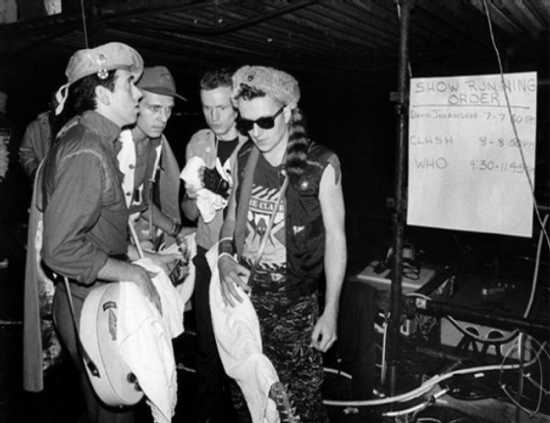
The Film: Martin Scorsese’s Gangs of New York, starring The Clash.
This one was finally made in 1999 with Daniel Day-Lewis chewing up all the scenery in sight – including co-star Leonardo DiCaprio. When it came out, it divided critics and audiences, some of whom think it’s a masterpiece while others think it’s an unholy mess. God knows what they would have thought if it had actually been made back in the mid-’70s, when it was first conceived as a vehicle for punk-rock legends The Clash.
Having just gained fame and fortune with 1976’s Taxi Driver, director Martin Scorsese had the clout to make almost anything he wanted, and what he wanted was to make a film of Herbert Asbury’s mammoth history of the New York underworld as a big-budget historical epic starring The Clash, who would also do the soundtrack. In short, Gangs of New York was originally supposed to feature Joe Strummer and his fellow oiks axe-murdering their way through 1860s New York to the sounds of “Clash City Rocker” and “I’m So Bored With the USA,” or something along those lines.
By the time Scorsese finally got around to pitching it, however, his musical extravaganza New York New York had flopped and Star Wars had come out, changing Hollywood into a machine for the kind of special-effects blockbusters Scorsese wasn’t interested in making. Gangs went into hibernation for over twenty years and The Clash idea, needless to say, was dropped.
A small trace of the original idea for Gangs remains in the finished film, when Peter Gabriel’s “Signal to Noise” serves as the very anachronistic soundtrack to the opening fight scene, but for the most part Gangs of New York ended up a pretty conventional historical epic. For better or worse, the original would probably have been a lot more interesting.
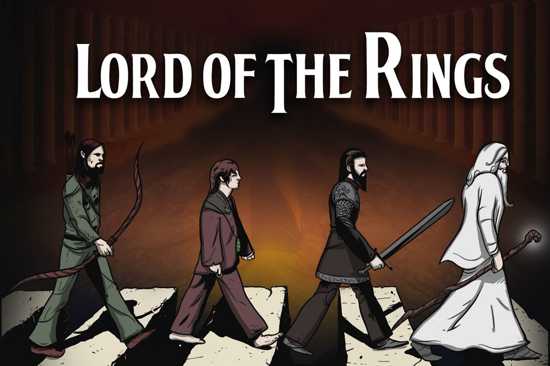
The Film: Lord of the Rings starring The Beatles.
This one may or may not have been anything more than a rumor, or a brief idea that surfaced in between acid trips and cutting Sergeant Pepper, but the story persists that throughout the 1960s, the Fab Four made several attempts to purchase the rights to JRR Tolkein’s ubergeek masterpiece as a vehicle for themselves.
It’s difficult to even begin to imagine what this movie would have been like. Even the thought of casting it boggles the mind. Ringo as Samwise Gamgee? Paul as Legolas? George as Treebeard? John as… who the hell knows? Given that all the other Beatles movies were comedies and/or music films, this one would have been completely uncharted territory.
On the other hand, the Beatles never made a really bad film, and their fame and money could have attracted major talent to any project they were involved in. Moreover, the director of their first two films, Richard Lester – who could easily have been called upon again – is a brilliant filmmaker whose work on the Three Musketeers films proves he could handle big, epic productions. This one was so crazy it might actually have worked.
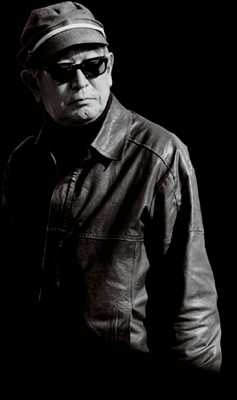
The Film: Akira Kurosawa’s The Masque of the Red Death.
This one mostly exists as nothing more than an aside in Donald Richie’s comprehensive book The Films of Akira Kurosawa, but rumor has it that the master Japanese filmmaker, who gave us such classics as Seven Samurai and Yojimbo, as well as inspiring filmmakers from George Lucas to Sergio Leone (the storyline of Star Wars is yanked from Kurosawa’s The Hidden Fortress, and A Fistful of Dollars is a shot-for-shot remake of Yojimbo), wrote a completed script that transferred Edgar Allen Poe’s macabre short story to Japan.
Given Kurosawa’s success in adapting other Western literary works like Shakespeare’s Macbeth and King Lear, as well as Doestoevski’s The Idiot, this has to be one of the most tantalizing possibilities on this list. Kurosawa’s work ranges from historical epics to intimate family dramas, but he never made a horror film, and – good or bad – it would have been fascinating to see his take on the genre.
Unfortunately, by the time the script was written, the Japanese film industry had shifted to making cheap monster films like Godzilla, and Kurosawa was out of a job for years, only coming back in the early ‘80s with the help of foreign financing. Masque of the Red Death got lost along the way.
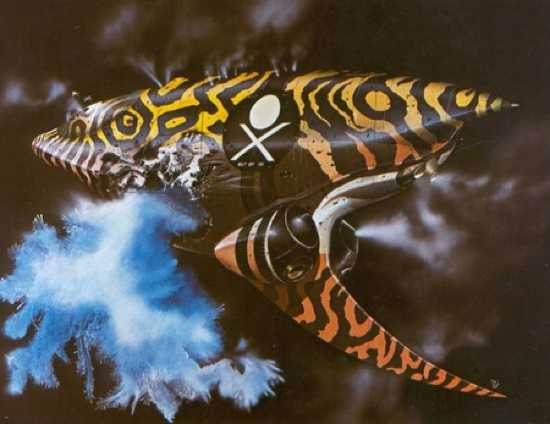
The Film: Alejandro Jodorowsky’s Dune.
Without a doubt, this is one of the most influential films never made. Back in the ‘70s, Chilean wunderkind Alejandro Jodorowsky was riding high on the success of El Topo, a completely incomprehensible surrealist Western that could only have become a hit in an era when everyone was on drugs pretty much all the time. All available evidence indicates, moreover, that Jodorowsky was and remains more or less completely insane. Nonetheless, he got the money and the go-ahead to start pre-production on an adaptation of Frank Herbert’s massive sci-fi epic Dune. Jodorowsky went into it in his usual style, reportedly paying Salvador Dali a million dollars to play a cameo role as the emperor of the galaxy.
In the middle of all this craziness, however, Jodorowsky managed to put together a team of writers and designers who would, quite simply, define the look of science-fiction cinema for a generation. Among them was Mobius, a French cartoonist whose designs would influence Star Wars, Alien, Tron, The Fifth Element, Blade Runner, and pretty much everything else; Dan O’Bannon, who would go on to write Alien; Ralph McQuarrie, many of whose designs would later show up in Star Wars and its sequels; and last but very much not least, a goth lunatic from Sweden named H.R. Giger, whose designs for Alien, including the titular acid-blooded parasite, would change the look of movie monsters forever.
Needless to say, budgetary problems and Jodorowsky’s eccentricities derailed the production, and its design team broke up and went off to write or design pretty much every major science-fiction movie of the next thirty years.
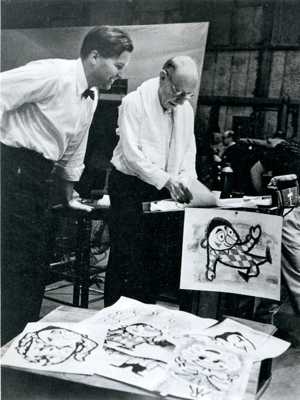
The Film: Orson Welles’ and Walt Disney’s The Little Prince.
Maverick filmmaker, actor, writer, personality, raconteur, wine spokesman, and pretty much everything else, Orson Welles had a career littered with some of the greatest films ever made and some the greatest films never made. Among the movies he wanted to shoot and never did were adaptations of Moby Dick, King Lear, and Catch-22, but this is probably the most painful missed opportunity.
In the late 1940s and ‘50s Welles was on his way out of Hollywood and spending more and more time in Europe. He hooked up with independent producer Alexander Korda and spent several years working on projects that never quite came to fruition. The one that got the farthest was an adaptation of aviator Saint-Exupery’s classic bittersweet children’s fantasy The Little Prince.
Welles’s typically ambitious concept was to make the film as a combination of live action and animation, which he insisted could only be accomplished by Disney studios. Legend has it that the idea went so far as a meeting between Welles, Walt Disney, and the Disney executive staff. Following his presentation, Welles left the room and Disney reportedly told his associates “Gentlemen, there’s only room for one genius at this company.” With Disney’s refusal to participate, the momentum behind the film dissipated, Welles went off to other things, and his Little Prince remained a pipe dream.
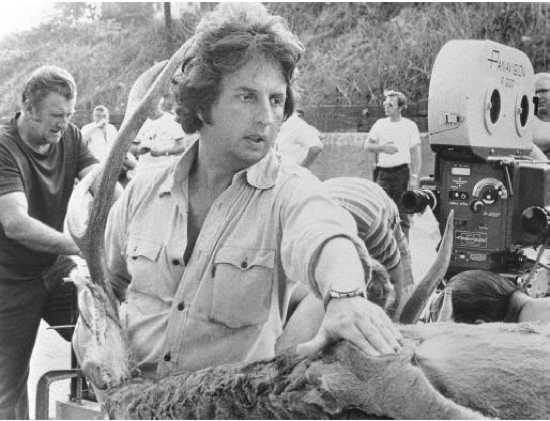
The Film: Michael Cimino’s The Fountainhead.
In one of the most famous rise-and-fall stories in Hollywood history, a former director of commercials and writer of Clint Eastwood movies named Michael Cimino came out of nowhere to direct The Deer Hunter, now considered one of the greatest films of the ‘70s, and then followed it up with Heaven’s Gate, one of the biggest box office bombs of all time.
In between, however, Cimino was riding high as the biggest thing in town, and among the projects he contemplated was an epic production of Ayn Rand’s The Fountainhead starring his Heaven’s Gate leading man Kris Kristofferson. A notorious perfectionist, Cimino likely identified with the novel’s protagonist, a genius architect who refuses to compromise his art despite opposition from all sides. What can’t be denied, however, is the director’s talent for creating extraordinary visuals, and one can only imagine what Cimino would have done with the monumental modernist architecture described in the book.
Cimino, however, met a nastier end than Rand’s protagonist. The failure of Heaven’s Gate destroyed his career along with his plans for The Fountainhead, and made him a pariah in Hollywood. According to recent reports, he now lives in Paris as a transvestite.
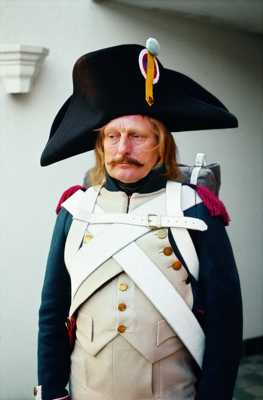
The Film: Stanley Kubrick’s Napoleon.
Following the success of 2001: A Space Odyssey, revered filmmaker Stanley Kubrick – like many other directors on this list – wanted to exploit his newfound power in order to make his dream project: a massive historical epic based on the life of Napoleon.
Of all the films on this list, this one probably came closest to fruition: Most of the extensive pre-production Kubrick devoted to all of his films was finished, costumes were made, funds were in place, locations were chosen, and a tentative cast with then-newcomer Jack Nicholson in the lead was in the process of being finalized.
Unfortunately, bad luck intervened. A major film about Napoleon called Waterloo flopped at the box office, and the large budget required to realize Kubrick’s concept suddenly looked like a losing gamble. The moneymen pulled out and Napoleon was consigned to oblivion.
Napoleon may now be the best-known film never made. Following Kubrick’s death, the director’s famously secretive control over all his projects ended, and many of his preparations for Napoleon were made public. The script has been widely disseminated on the web, and Kubrick’s family has published a book featuring much of the film’s pre-production material.
Nonetheless, Kubrick was well-known for changing his material substantially during the long shoots that became his trademark. 2001 and Barry Lyndon, for example, bear little resemblance to their original concepts and even the screenplays on which they were based; while The Shining was rewritten on an almost daily basis during shooting.
Indeed, anyone who has read the Napoleon script can tell that it is – at best – a vague blueprint for what Kubrick had in mind. It’s essentially a sketch, following Napoleon’s career along very basic historical lines. The visual and sonic aplomb Kubrick employed in his films simply can’t be conveyed on the page, and what he would have done with the extraordinary story of an obscure Corsican soldier who came to rule Europe and then fell from grace as precipitously as he had risen can only be guessed at.
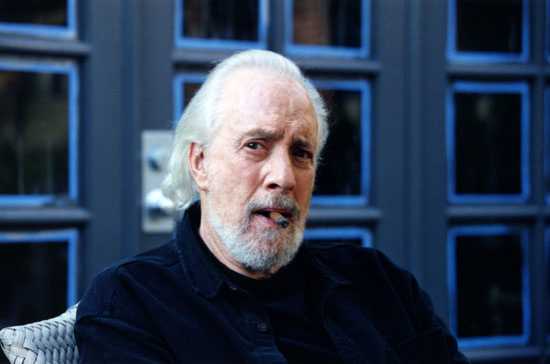
The Film: The Chinatown trilogy.
When screenwriter Robert Towne wrote his script for Chinatown, now considered one of the best pieces of writing ever penned for the screen, he envisioned it not just as a homage to the great film noirs of the 1940s and ‘50s, but as a sweeping history of the building of modern Los Angeles.
Needless to say, it was a dark history, and Towne planned to deal with the extent to which the forces of corruption and collusion had played a major a role in the creation of LA and even modern America itself. Where the first film dealt with land fraud and water rights, the second was to deal with oil, and the last with pollution and environmental destruction.
Chinatown, of course, became a classic, with director Roman Polanski pushing the film into even darker territory than Towne had intended. The two sequels, however, didn’t work out as planned. Polanski’s conviction for sexual assault of a minor and subsequent flight to Europe put paid to the possibility of an immediate sequel. The second film was not made until nearly two decades later. Called The Two Jakes, it was to be directed by Towne himself, but star Jack Nicholson ousted the writer and ended up taking over the directorial reins.
Needless to say, Nicholson is a more talented actor than director. The Two Jakes was a pale shadow of its predecessor, and is now mostly forgotten. With its failure, the third film was unceremoniously abandoned. It is not even certain if a screenplay was written. What the series could have been had it been properly realized, one can never know, but there is little doubt, given the talent involved, that it could have been very great indeed.
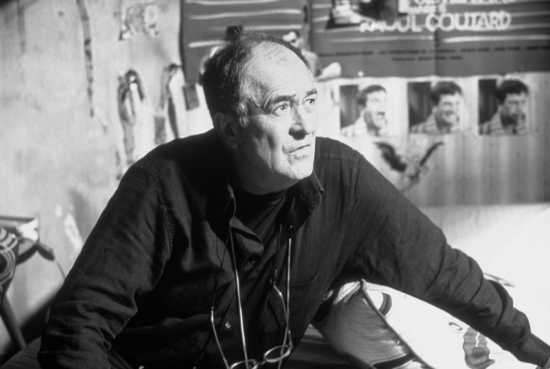
The Film: Bernardo Bertolucci’s Red Harvest.
He’s been mostly silent of late, but back in the 1970s Italian director Bernardo Bertolucci was one of the most esteemed directors in the world, influencing not only European art cinema but also Hollywood directors like Francis Ford Coppola (some of the shots in The Godfather Part II are lifted directly from Bertolucci’s The Conformist). Back in the late ‘70s and early ‘80s, however, he was planning to go Hollywood with a big-screen adaptation of Red Harvest, Dashiell Hammett’s classic pulp detective novel.
While the intellectually-oriented Bertolucci might seem an unlikely choice for a potboiler, he and Hammett had more in common than one would think. Like Bertolucci, Hammett was a lifelong communist, and his blood-soaked tale (the number of murders runs well into the double-digits) of an unscrupulous detective who pits two warring gangs against each other in a city ruled by corruption was intended to be as much a bitter critique of American capitalism as a hard-boiled detective story.
Red Harvest has been indirectly adapted several times (most notably in Kurosawa’s Yojimbo and Sergio Leone’s remake A Fistful of Dollars), but the original’s violence and subversive politics may have been too much for Hollywood, and Bertolucci’s reputation as an uncompromising and controversial artist likely didn’t help matters.
For whatever reason, Red Harvest never happened, and Bertolucci went on to film more conventional epics like The Last Emperor. Given that Bertolucci has never made a genre film, what he and his legendary cinematographer Vittorio Storaro might have done with the visual possibilities of a noir gangster movie, and how he would have reconciled the conventions of the genre with the book’s radical politics, remain tantalizing questions.
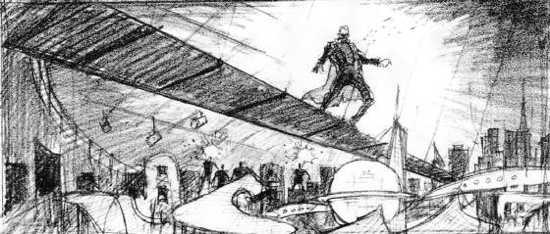
The Film: Francis Ford Coppola’s Megalopolis.
Next to Napoleon, this is probably the best known film on this list. At least one draft of the screenplay is available online, and as late as 2000 Coppola was reportedly shooting second unit footage for the film. Indeed, rumor has it that, in one form or another, it has haunted Coppola’s career since at least the early 1980s.
Judging by the materials available, Megalopolis might be one of the most ambitious movies ever conceived: A mash-up of Ayn Rand’s The Fountainhead, ancient Rome’s Cataline conspiracy, and an epic vision of a near-future New York City, it’s the story of a genius city planner who has turned New York into the center of a global economic and cultural empire, but is also threatened by conservative forces in politics, organized crime, and big business who are plotting his downfall.
At the same time, however, there are elements in Megalopolis that are both wholly original and utterly bizarre. The protagonist, for example, appears to have the mystical power to bring time itself to a halt at will. In short, it is the type of movie that will be either a dazzling triumph or a career-ending failure – but nothing in between.
It’s not hard then, to figure out why this one has never happened. Put simply, the amount of money required to realize its epic scope would be enormous. Without the backing of a Hollywood studio, it probably could never be made, and because Hollywood is not the type of town to take chances on a film this unusual, it never has been made. Given that Coppola has now taken up a second career making small, self-financed independent movies, one is forced to admit that, sadly, it probably never will be. For all intents and purposes, Megalopolis has been abandoned.
Note:
Most readers will probably notice the one obvious choice that isn’t included in this list: Terry Gilliam’s The Man Who Shot Don Quixote. It’s omitted precisely because it’s so obvious. Due to the success of the excellent documentary Lost in La Mancha, the story of its unmaking is so well known that it seemed superfluous to include it here, especially when there are so many lesser-known examples to choose from.
